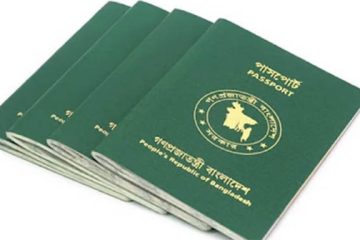The investigation committee for Saturday’s road crash, which killed filmmaker Tareque Masud and media personality Mishuk Munier, found that the poorly maintained Dhaka-Aricha highway was too narrow at the spot and had incorrect road markings.
The total road width at the spot should have been 10.3 metres, standard for a straight road, but it was only 8.7 metres, the enquiry committee found.
A member of the committee said they found that each lane at that curve of the highway were about a metre less wide than they should have been for even a straight road.
The hard shoulders on each side were supposed to be a metre and a half wide for straight roads but they found them to be just a metre wide. They also found the soft shoulder covered by bush.
The widths of the lanes, hard shoulders and the soft shoulders of the road there should have been even more than the standard of a straight road since it is a curve, but the Roads and Highway Department failed to build the road maintaining standards for straight roads even, the committee member said. The road surface was of very good quality with ample amount of grip available for assisting in braking, the member said.
“The roadside bushes were supposed to be cleared off before the rainy season, especially at curves, otherwise it obstructs visibility,” he said, requesting anonymity.
“There is a warning sign there saying no overtaking but the road markings were contradictory. It was saying overtaking was actually allowed,” the member said.
The Daily Star asked a driver which signs he follows. He said, “Drivers usually follow the road markings since signs are often hard to see as they whiz by or more often than not they are obscured by billboards or vegetation.”
The communications ministry yesterday transferred the chief of the committee before time for the probe expired. However, the committee chief claimed that their work was done and they might submit the report today.
“The average speed of the bus was over 70km. But I would accuse both drivers for their carelessness,” said Arifur Rahman, committee chief and superintendent engineer of Dhaka circle. He was transferred yesterday to the Comilla circle.
When asked how they calculated the average speed, he said they calculated the departure time of the bus, its 15-minute stopover at Savar and the time of the accident.
The bus hit the microbus 1.5 feet inside the microbus’s right edge and if the microbus driver had a fraction of a second more, he could have prevented impact.
“We have found that there was space on the microbus’s left. It did not use the road space and was on the middle of the road,” said Arif.
The committee talked to three passengers of the bus and two survivors–Saidul and Joly Mamun–of the microbus.
“The passengers mentioned a third vehicle in front of the microbus. It might have obstructed the visibility of the microbus driver making him unable to see the bus,” said committee chief Arif.
However, The Daily Star interviewed Monis Rafiq, a survivor of the microbus who was on the front seat next to the driver. He said he was looking ahead of the vehicle during the accident. “I was there. I did not see any third vehicle. There was no third vehicle. All of a sudden the bus appeared and hit us,” said Monis Rafiq when he was asked again yesterday how the accident happened.
The three-member communications ministry probe committee was asked to submit its report within seven days from last Saturday. The other two members are RHD Dhaka circle caretaker engineer Qumrul Haque and executive engineer of Manikganj RHD Sabuj Uddin Khan.
-With The Daily Star input




















